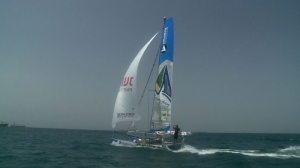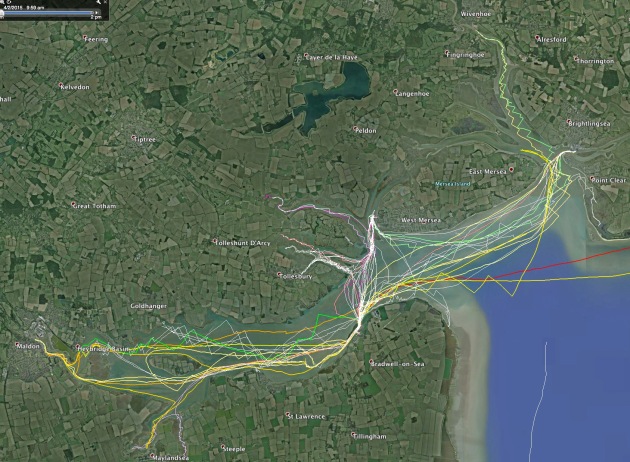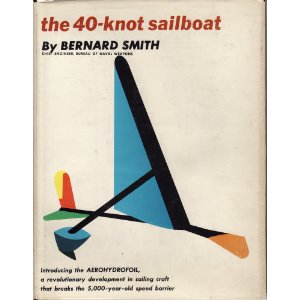Back in October, my friend Chris and I went for a long day sail in Spiders, my 16ft Wayfarer dinghy. We decided to take advantage of a rare combination of Westerly offshore breeze and ideally-timed tides (High Tide was at noon) and head for Burnham on Crouch.

We left Brightlingsea at 0815, quickly putting in a reef to better handle the 18knots gusts as we reached down the River Colne and across the mouth of the River Blackwater. The spring tide was barrelling in at over 2 knots, and as we crossed the main Blackwater channel the wind against tide bumpiness was slightly testing, but nothing too scary.

The sea state calmed once we’d crossed over onto the Dengie flats, and we were averaging almost 7 knots as we passed the 7th century St Peter on the Wall chapel and headed towards the Ray Sands channel on the rising tide. This is a short-cut across the mud flats and into the River Crouch. It had very nearly caught me out back in 2008, when my route planning was less careful.
There’s a very useful informal chartlet of the Ray Sands channel available on the Crossing The Thames website. It’s from surveys done in Aug/Sept 2022. We crossed the shallowest part of the Ray Sands channel at 1000, with plenty of water to spare so we went straight from Ray Sands Middle buoy to Crouch No.3 buoy, which avoids the dogleg via the yellow Ray Sands buoy.
However the wind against tide conditions as we tacked into the mouth of the River Crouch were bumpy and wet, and we hove-to to put on another layer and have some chocolate. Luckily the sea state eased a little as the we passed the entrance to the River Roach, and the final beat towards Burnham was enlivened by having to avoid trashing the start of the first Endeavour Trophy race, which is the champion-of-champions for UK dinghy racing.
We moored up at the Rice and Cole jetty at 1115, and had a welcome Cornish pasty for lunch in the bar of the Royal Corinthians Yacht Club. We returned to the Wayfarer at midday, just in time for the tide to turn, and the sea state to dramatically flatten as a consequence. The gusts had also lessened, and so we raised full sail and enjoyed an easy run back down the Crouch (video). We then turned up across the Ray Sands channel again for a close reach across the Dengie flats (video). Conditions were ideal, with a nice F3 from WNW, so Chris had a go at helming, without incident.

It took us a while to plug the outgoing tide across the Blackwater, until we finally spotted the beacon marking the wreck of the Molliette which for me marks the start of the River Colne. We hugged the shallows of the Mersea Flats to escape the ebb tide as we made our way back to Brightlingsea, sailing onto our mooring at 1530.

32 Nautical Miles sailed, at an average of 4.8knots. Our only big mistake was thinking it was too late in the season to need sun cream. That’s a good day on the water.























